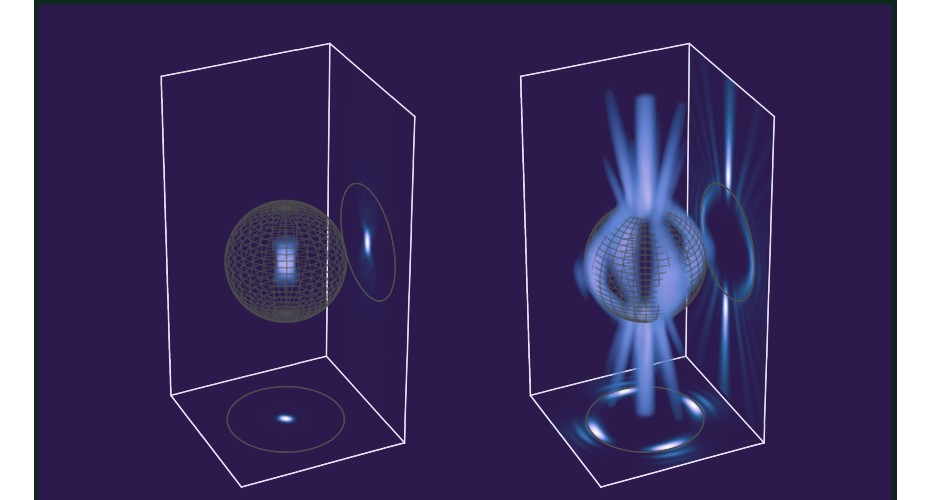Scientists develop new technique for bespoke optical tweezers

Light intensity in conventional optical tweezers (left) and a custom-tailored optical trap (right). Projections show cross-sections through the middle of the particle, which is 6μm in diameter.
Scientists have developed a new way to trap small particles with light.
Building on the Nobel Prize winning technique of optical tweezers (Arthur Ashkin, 2018), a team of physicists, led by Dr David Phillips at the University of Exeter, has advanced the possibilities of optical trapping.
Conventional optical tweezers, developed in the 1980s, are a tightly focused laser beam which can attract and trap certain micro-sized particles or organisms, akin to grabbing something with a pair of tweezers.
“In optical tweezers, though, a particle is not completely immobilised,” explained first author Dr Une Butaite.
“It is experiencing thermal motion of the molecules surrounding it. A bit like a boat in a lake rocked about by the wind and the waves but prevented from drifting away by the anchor, a particle in optical tweezers is constantly jiggling about but its motion is confined to a certain volume.”
Generally speaking, the smaller this confinement volume is, the more useful the optical trap.
For optical tweezers to work, the laser light has to be tightly focused into a very small region, which can be significantly smaller than the particle being trapped. Herein lies the issue – if the particle is large, most of the light will sit near its centre, but light interacts with the particle more strongly at its surface.
In other words, larger particles are not able to make the most out of the available light, decreasing the level of confinement. “This is where our research kicks in,” explained Dr Phillips. “We hypothesised that if instead of being concentrated in the middle of the particle, the light enveloped it, that would confine the particle more strongly, giving it a sort of a tight hug.”
Determining the exact shape of light that would yield the strongest confinement is not straightforward, though. “There is no one-size-fits all solution here, for best performance every different particle requires a custom suit-of-light, if you will,” – said Dr Butaite.
Realising this in practice meant that various mathematical and numerical methods, as well as rigorous experimental techniques had to be developed and perfected – all achieved in collaboration with researchers at the University of Glasgow lead by Dr Jonathan Taylor (Scotland), and the Vienna University of Technology lead by Prof Stefan Rotter (Austria).
This work has been made possible with funding from the European Research Council, the Royal Academy of Engineering, the Engineering and Physical Sciences Research Council, the Royal Society of Edinburgh, and the Austrian Science Fund.
The paper, published in the journal Science Advances, is titled: ”Photon-efficient optical tweezers via wavefront shaping”.



